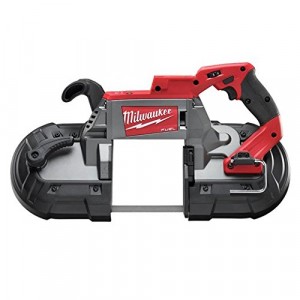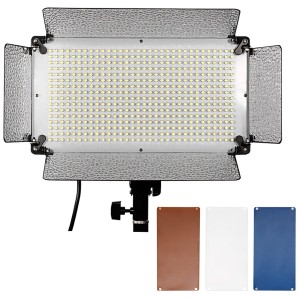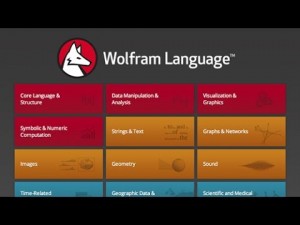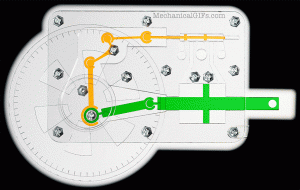An Interest In:
Web News this Week
- April 2, 2024
- April 1, 2024
- March 31, 2024
- March 30, 2024
- March 29, 2024
- March 28, 2024
- March 27, 2024
Theodore Gray, co-founder of Wolfram Research, talks about his favorite tools

Kevin Kelly and I interviewed Theodore Gray the co-founder of Wolfram Research, makers of Mathematica and Wolfram|Alpha. Hes also the founder of App publisher Touch Press and the author of many books that Kevin and I own and love, including The Elements, Molecules, Reactions, and Mad Science. Hes also the proprietor of periodictable.com.
Subscribe to the Cool Tools Show on iTunes | RSS | Transcript | Download MP3 | See all the Cool Tools Show posts on a single page
Show notes:

"I used to have a lot of different tools that I really liked. I like tools. I'm kind of tool guy. But once I got this laser cutter, it's like everything else has fallen by the wayside, because this thing is just so much more fun and more enabling of things that any other tool I've ever had. ...Their smallest and cheapest model is a 130 watt CO2 tube with a 51 by 35 inch working area. I mean, this thing is the size of a grand piano. And it's like it's huge. It's way, way bigger than I had any intention of getting, and frankly more than I had planned to spend on a laser cutter. . It's just huge, and it's very powerful, and it's very fast, and it can cut half-inch acrylic like butter. You can actually cut inch-thick acrylic if you're willing to go a little slow."

Milwaukee M18 Fuel Deep Cut Band Saw
"A handheld bandsaw. This was probably, I don't know, more than 20 years ago when I was building a house. I had just bought a farm, like a farmstead. And I was building stuff, big things out of wood. We built a greenhouse and docks, floating docks on a lake and a whole house. So I had every kind of tool there was. And then I saw this bandsaw. It's like, 'Oh my god. It's a bandsaw you can hold in your hand. The bandsaw is like a precision surgical instrument compared to the demolition saw. You can just go up to the side of a building and just gently and calmly saw through whatever you want to saw through. And so I just love the concept of this saw. And it worked great. And what I love about it now is that it's over 20 years later, and I really don't take care of my tools, right? I'm not a tool care person. But this thing is perfect. It just runs. It's never given me the slightest trouble. I abuse it, and the blades pop off, and they just go right back on again. It seems to be indestructible, and I still use it regularly whenever there's something that needs hack sawing but on a larger scale."

When I started photographing things, it was, I didn't go quite back as far as gas lights or arch lights or whatever. But incandescent photo lights, you know, 500 watt quartz halogen bulbs and even 1,500 watt halogen bulbs. That was what you used. They were just, the clich is how hot they were which has been an issue forever. And now there's LED lights. It's just a complete night and day because, well, you know, you get day you get really, really, really bright light with almost imperceptible heat. I did an experiment once where I set up every single one of the LED lights we have. And we've got some extra fresnel lenses to go on past the end of the regular focusing lenses, the light and sort of concentration everything down to a couple of inches across. Just blindingly bright concentrated light. And you stick your hand in there, and it feels very slightly like there's a bit of warmth coming on your hand. But basically no heat. And that's been revolutionary in our ability to do filming of particularly sort of delicate substances, like wax. Because in the case of Elements it was all elements. But now that we've moved on to Molecules, a lot of these things, they're sort of, they're delicate objects. They might catch fire. They might melt. There's all kinds of things that might happen.

Every day I'm using it for something. And I'll give you one example is quilting patterns. So this was actually a project I did a few years ago with a currently ex of mine making stitching patterns for elaborate art quilts. The problem with quilting is that you can't cut the thread. Like it's bad to, you want to make a continuous line to, you know, to stitch your pattern without stopping. And if you have to stop you can but it slows everything down and it's a pain. So you end up with a problem of, here is some line art. Here's a vector file and it's a illustrator with a very complicated pattern of lines that cross each other and that hit each other and T connections and things like that. And you want to find a single path, a single line path, that traces out all the lines that are in the original design in the optimal way Like you have a city with streets in it and it snowed and you want to plow out all the streets, but you don't want to run over the same street twice anymore than necessary. So anyway, this is a mathematical optimization problem, and it turns out that the commercially available software for doing embroidery design and quilting designs is mathematically unsophisticated, shall we say. So now I do it in [Wolfram Language]
Also mentioned:

Mechanical gifs are physical models you can hold in your handThere are things like differentials, transmissions, rack and pinion steering, steam engine, and you get these beautiful laser cut acrylic parts and then assemble them, and then you have these, exactly what it says, they're mechanical gifs that show how these things work in action. Mark
We have hired professional editors to help create our weekly podcasts and video reviews. So far, Cool Tools listeners have pledged $337 a month. Please considersupporting uson Patreon.
Original Link: http://feeds.boingboing.net/~r/boingboing/iBag/~3/uH3LcTjWM2Q/theodore-gray-co-founder-of-w.html


